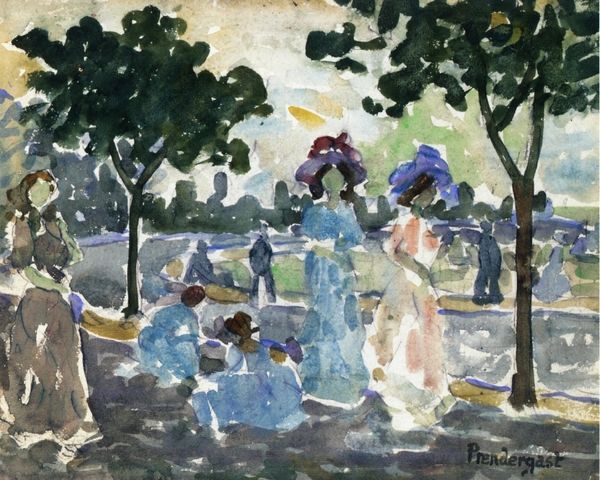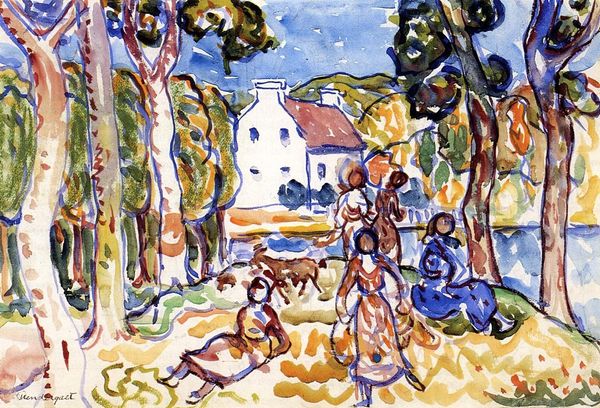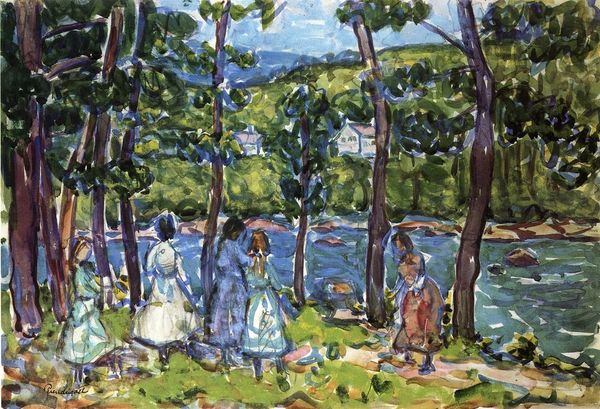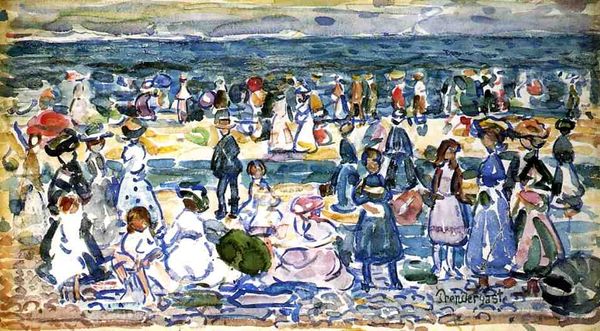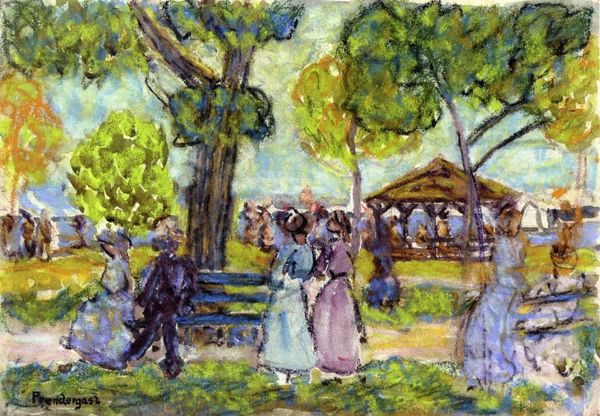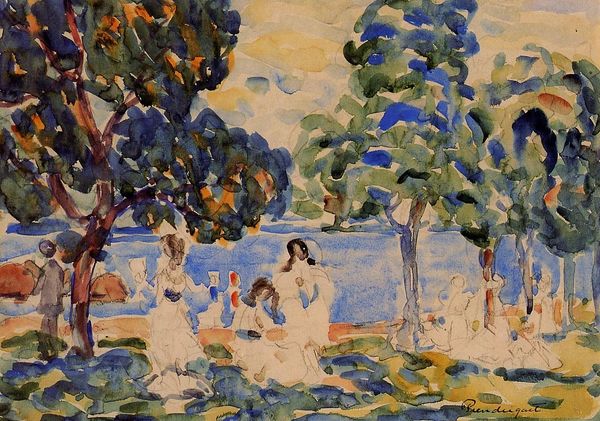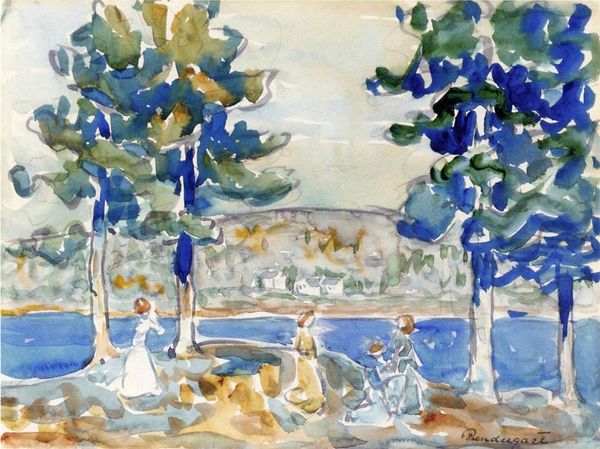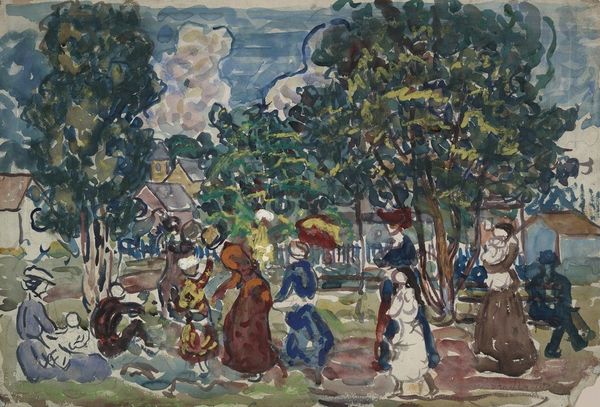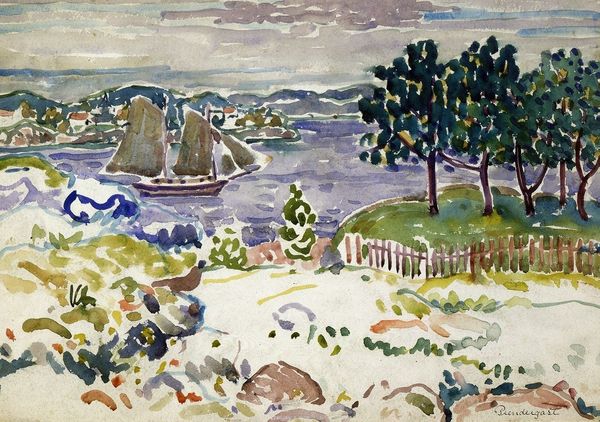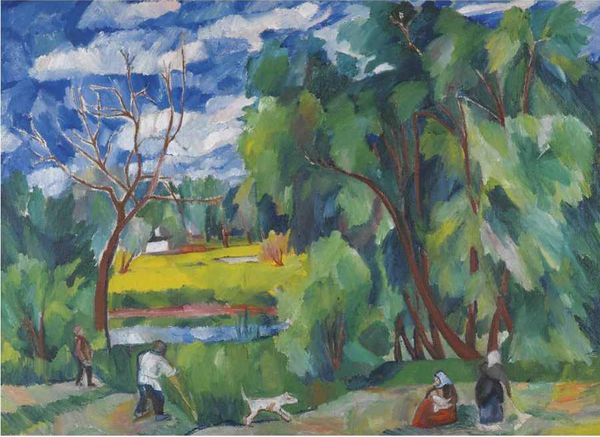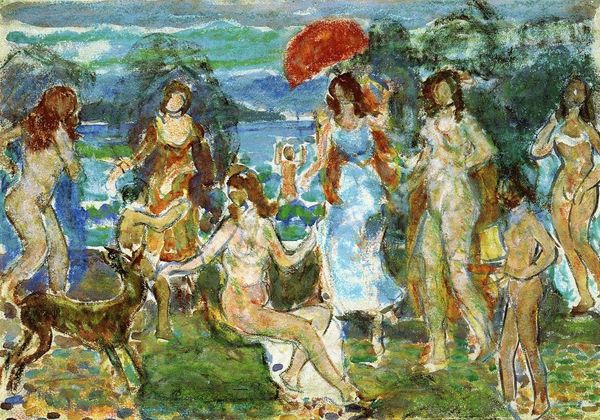
Dimensions: 26.67 x 38.74 cm
Copyright: Public domain
Curator: Maurice Prendergast's watercolor, "Beach Promenade," created around 1910, captures a fleeting moment of leisure and observation by the sea. What are your immediate impressions? Editor: It feels incredibly free, almost chaotic. There's a restless energy in those washes of color, particularly in the treatment of the trees. It is as though the painting itself wants to catch the shifting sunlight on the waves. I see this work, I want to read a gendered, socio-economic dimension of who is free to leisurely roam beaches, like this. Curator: Absolutely. I see it reflecting back how people used to experience beach culture, in general. Observe the impressionistic style that gives an otherworldly symbolism of what has and had been. I notice those blues repeating from sea, sky, all the way to dress, like emotional anchors connecting those elements. The human figures, almost blending, suggests the ocean has an emotional tie with humanity. The tree serves as a divider, marking those allowed in society with those that have chosen to be apart. Editor: Interesting, I interpreted that division differently. Those silhouetted figures on the left lack detail compared to those on the right, do they indicate marginalized identities in society? Could this then reflect back how marginalized individuals often linger at the periphery in leisure activities, physically present yet culturally obscured or ignored? Curator: The beauty is that they could also mirror societal integration and belonging. Look closely. The fluid brushstrokes render those left as mere observers with that division serving as an entry point of those that wish to enter society versus those who may not. A space for change. It provides different ideas through impression and perspective of meaning through personal history. Editor: But is it intentionally ambiguous? Considering it's created during a specific historical era when societal structures often deliberately excluded or diminished certain groups. Prendergast then positions us to ask, "How do artworks from this era reinforce these structural inequalities or do they disrupt expectations by highlighting societal change?". Curator: Possibly so, or maybe it simply aimed to catch how societal rules had changed around a promenade. Its allure rests within both, an icon, isn’t it? Each mark of color is a visual echo and through that, speaks with varying tones through different historical contexts. Editor: Exactly, through this intersection of historical, cultural, and symbolic contexts we are confronted to ask ourselves as viewers what that symbolism personally reflects to our individual understandings of history. Curator: Well said! I'm going to walk away and observe this symbolism of "Beach Promenade" even more with everything you've said in mind! Editor: Me, too! Let’s check in to each find one thing about the piece that neither of us mentioned yet!
Comments
No comments
Be the first to comment and join the conversation on the ultimate creative platform.
